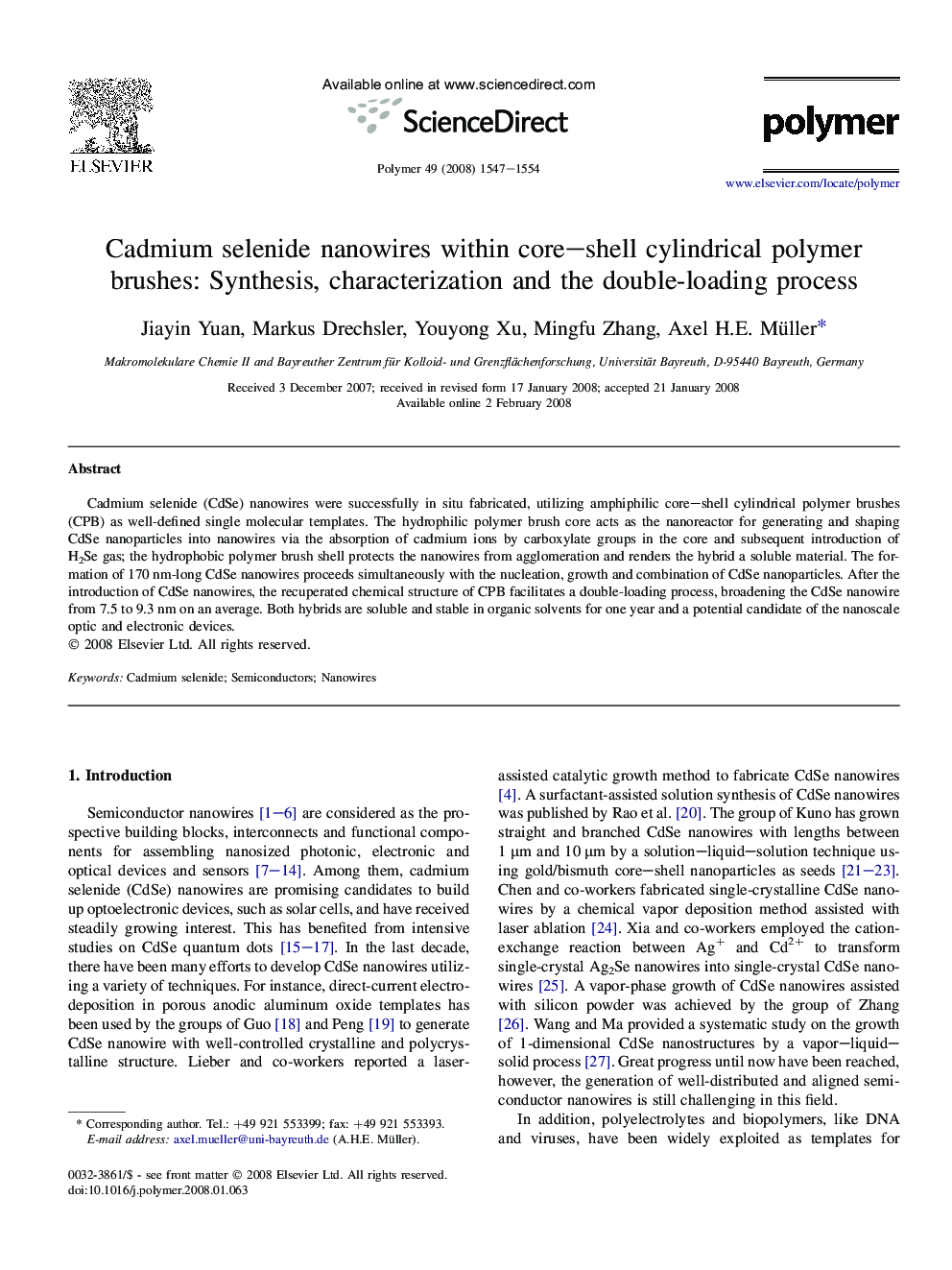| Article ID | Journal | Published Year | Pages | File Type |
|---|---|---|---|---|
| 5187896 | Polymer | 2008 | 8 Pages |
Cadmium selenide (CdSe) nanowires were successfully in situ fabricated, utilizing amphiphilic core-shell cylindrical polymer brushes (CPB) as well-defined single molecular templates. The hydrophilic polymer brush core acts as the nanoreactor for generating and shaping CdSe nanoparticles into nanowires via the absorption of cadmium ions by carboxylate groups in the core and subsequent introduction of H2Se gas; the hydrophobic polymer brush shell protects the nanowires from agglomeration and renders the hybrid a soluble material. The formation of 170Â nm-long CdSe nanowires proceeds simultaneously with the nucleation, growth and combination of CdSe nanoparticles. After the introduction of CdSe nanowires, the recuperated chemical structure of CPB facilitates a double-loading process, broadening the CdSe nanowire from 7.5 to 9.3Â nm on an average. Both hybrids are soluble and stable in organic solvents for one year and a potential candidate of the nanoscale optic and electronic devices.
